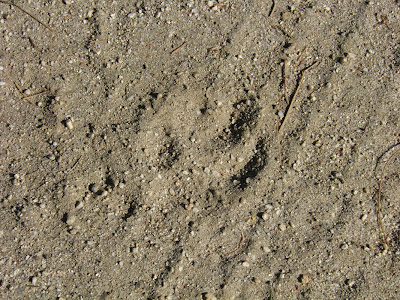 |
| Above Turkey Flats on Mt Graham |
 |
| Ceanothus greggii, Manzanita,and Cliffrose |
 |
| Anatis lecontei, Giant Lady Beetle |
At dusk we set up our sheets Mercury Vapor and Ultra Violet lights to attract night-flying insects. While Fred, hoping for bycids, stayed in the campground close to a windbreak with a lot of dead trees, I chose the little riparian area about a third of a mile down the road.
The most numerous visitors on both sheets were Dichelonyx sp. This genus in the family Scarabaeidae that is not very well represented in Arizona. In fact the only other Arizona entry on BugGuide is my own record from Oak Canyon, Sedona. But the species on Mt Graham is bigger and I hope Bill Warner will id it for me.
Here is a sample of the many species of moths that I photographed. Maury Heiman did most of the identifications. To see all my Mt Graham moths, please click here.
To see all my beetles from this trip, please click this link.
 |
| Vaejovis electrum Hughes 2011 |
 |
| Nomius pygmaeus (Stink Beetle) (2) |
In the morning I was up early to watch for some moth and beetle species that fly during the cooler day light hours. Along the road I found Silverspotted Skippers already positioned to attack everything from slow flying blue Pleasing Fungus Beetles to darting big Aeshnidae. Several kinds of Lycids and their mimics where also on the wing or nectaring on Ceoanothus flowers.
The road and the roadside vegetation were dusty. Luckily there was no traffic as we had had the place completely to ourselves since the early evening. When I reached deeply carved riparian area my eye caught tracks of a big animal that had climbed up onto the road. Repeatedly, it seemed. I found clear marks: rounded, four-toed with no claw marks where it hadn't been climbing, the pad with three lobes in back. Bigger than my fist, bigger than my wolf-dog's tracks (of course, Laika does have very dainty feet). This was a big cat, no bobcat but a mountain lion.
I saw that the puma's tracks overlapped mine from the night before. So he had strolled along the road after I left my sheet around 10:30 PM? Then I found a spot where my foot prints covered those of the cat. I also saw paw prints close to my sheet. Then a row of them, leading towards the campground. And again, my own footprints crossing the paw prints, and in some places the paw prints were on top. At a very soft, dusty spot there were clearly much smaller tracks next to the big ones. At least one cub! It seems that I had had a lot of company last night. I hadn't heard a thing.
But by now I was listening to any pebble that fell off the cliffs along the road and any rustling in the bushes. Believe me, there were shadows moving under the overhanging branches of a big blue spruce and on the cliff above fawn colored rocks moved and turned into crouching lions staring down at me.
But then all I found were some lizards and more skippers bashing each other noisily with their wings. Mysterious little clicks and crackles were identified as the 'song' of Platypedia putnami, the small cicada associated in many places with Ponderosa Pines. I resumed chasing bugs with my net and beating branches over my beating sheet.
Mother Puma was probably relaxing somewhere with her cubs, laughing at those human antics ...













You are a brave soul! Between the mountain lions and the insects! I hate scorpions. We had the giant black ones in my shed when I lived in Key West.
ReplyDeleteLove your interesting blog!
How rich Mt. Graham is right now -- we have nowhere near this insect and plant richness in our mountains at the moment. Your Trichocnemis is great, and I love the Lycids. Of course I know there are mountain lions right in our neighborhood here, as they are seen pretty regularly, and I take precautions walking at night here (walking with Gary and talking a lot!), but for some reason I don't think of the lions when I'm away from home. Glad you were unscathed ; )
ReplyDeleteFabulous, fabulous photographs. Love your Mountain Lions too.
ReplyDeleteThanks so much for the ID of the fly on my last post. I've found that we call them 'Snipe Flies' and have 15 varieties in this country. Fascinating - thank you!
Wow! I can relate to that lion "experience"...(a similar thing happened when I was cross-country skiing once! And I got the creeps!)
ReplyDelete